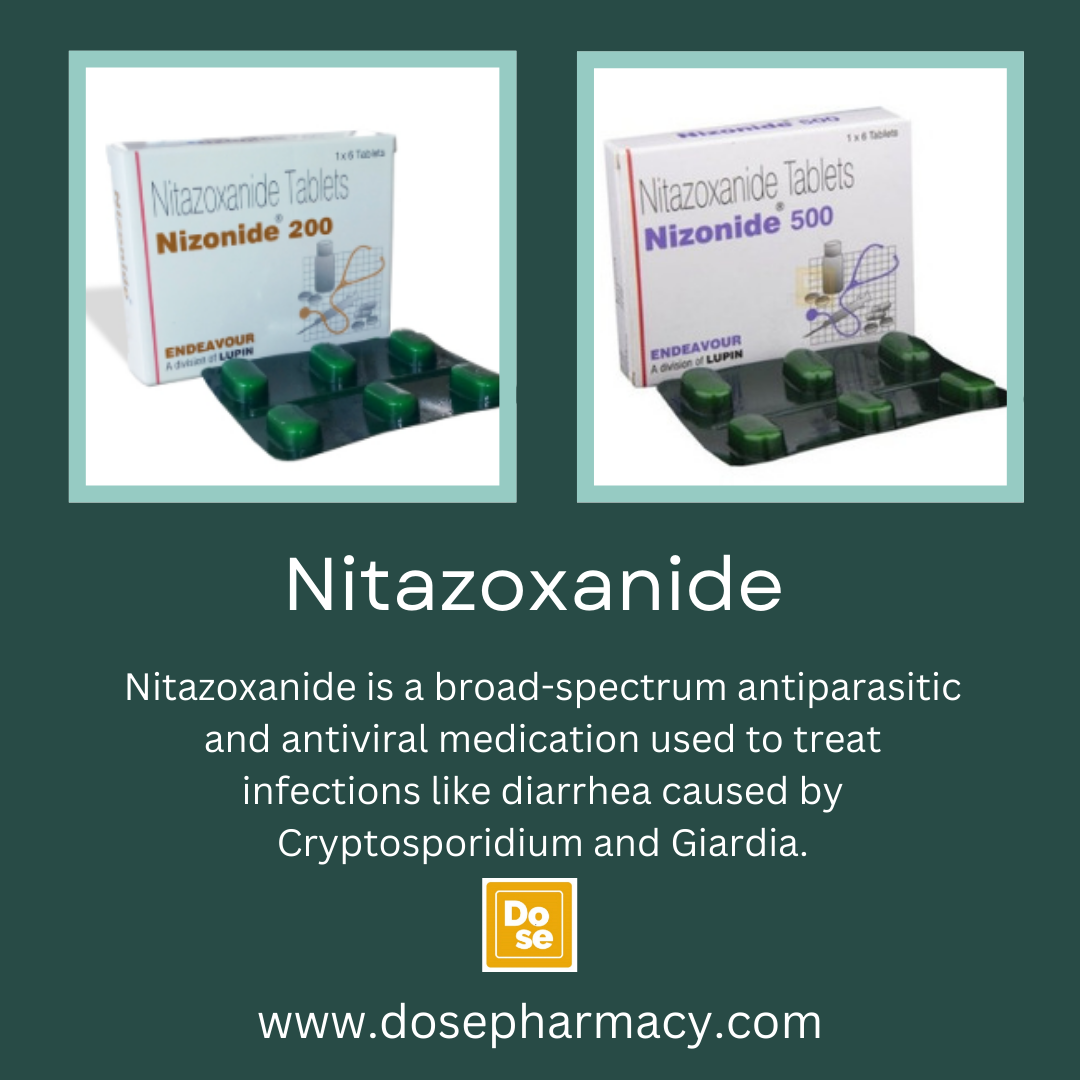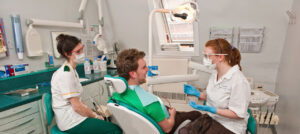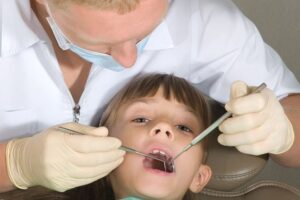How to Take Nitazoxanide: Tips for Best Results
Introduction Nitazoxanide 500 mg is a widely used antiparasitic and antiviral medication that helps treat a variety of intestinal and...

Introduction
Nitazoxanide 500 mg is a widely used antiparasitic and antiviral medication that helps treat a variety of intestinal and gastrointestinal infections. Originally developed to combat protozoa and helminths (like Giardia and Cryptosporidium), it has since shown effectiveness against certain viral infections, including rotavirus and norovirus. It is often prescribed for both adults and children, making it a versatile and valuable drug in the fight against infectious diarrhea and stomach ailments.
However, like any medication, proper use is essential for optimal results. This article will walk you through how to take Nitazoxanide 200 mg safely and effectively, covering dosage, timing, food interactions, and helpful tips to maximize its benefits.
💊 What Is Nitazoxanide Used For?
Nitazoxanide is used to treat:
- Diarrhea caused by Giardia lamblia or Cryptosporidium parvum (especially in children)
- Intestinal parasites and protozoal infections
- Rotavirus or norovirus gastroenteritis
- Helminthic (worm) infections in some cases
- Off-label viral infections, including influenza and COVID-19 (under clinical investigation)
📅 General Dosage Guidelines
Dosage depends on age, weight, and the condition being treated. Always follow your doctor’s prescription. Below are general guidelines:
🔹 For Adults and Children ≥12 years
- 500 mg of nitazoxanide every 12 hours for 3 days
🔹 For Children (1–11 years)
- 7.5 mg/kg every 12 hours for 3 days
- The dose is often given as an oral suspension (liquid)
❗ Always measure liquid doses using the measuring device provided—do not use a household spoon.
🍽️ Take Nitazoxanide With Food
One of the most important tips for taking Nitazoxanide effectively is to always take it with food.
Why it matters:
- Food significantly improves the absorption of the medication in your gastrointestinal tract.
- Taking it on an empty stomach may reduce its effectiveness and delay recovery.
Tip: Eat a small meal or snack (like toast, rice, or fruit) before taking your dose.
🕰️ Stick to a Regular Dosing Schedule
Consistency is key for Nitazoxanide to work properly. Follow these best practices:
- Take doses 12 hours apart, e.g., 8 AM and 8 PM.
- If you miss a dose, take it as soon as you remember. If it’s close to the next scheduled dose, skip the missed dose—do not double up.
- Complete the entire prescribed course, even if symptoms improve before finishing all doses.
Skipping doses or stopping early can lead to treatment failure or reinfection.
💧 Stay Hydrated During Treatment
Nitazoxanide is often used to treat diarrhea-causing infections, which can lead to dehydration. To avoid complications:
- Drink plenty of fluids, especially water and oral rehydration solutions.
- Avoid caffeine and alcohol, which may worsen dehydration.
- For children, consider giving electrolyte-rich drinks to maintain fluid balance.
⚠️ Avoid Drug Interactions
Nitazoxanide has relatively few drug interactions, but some combinations may require caution:
🔸 Inform your doctor if you’re taking:
- Anticoagulants (blood thinners)
- Immunosuppressants
- Other antiparasitic medications
- Vitamins or herbal supplements
Nitazoxanide is metabolized in the liver and may interfere with how other drugs are broken down.
🧪 Monitor for Side Effects
Most people tolerate Nitazoxanide well, but like any medication, side effects can occur. Common side effects include:
- Nausea
- Headache
- Stomach pain
- Discolored urine (yellowish-green) – usually harmless and reversible
Rare but serious side effects (seek medical help immediately):
- Severe allergic reactions (rash, swelling, difficulty breathing)
- Signs of liver problems (yellowing of the skin or eyes, dark urine, persistent nausea)
Report any unusual or persistent symptoms to your healthcare provider.
👶 Tips for Giving Nitazoxanide to Children
For children, especially under 11 years, Nitazoxanide is commonly prescribed as a flavored liquid suspension.
Helpful tips:
- Shake the bottle well before each use.
- Use the dosing syringe or cup provided with the medicine.
- Administer with a small meal to enhance absorption.
- If the child vomits soon after the dose, check with your doctor—another dose may be necessary.
Note: Never exceed the recommended dose, and avoid crushing tablets meant for adults to give to children unless instructed by a healthcare provider.
🧴 Storage and Stability
Proper storage ensures that Nitazoxanide remains effective:
- Tablets: Store at room temperature (20–25°C or 68–77°F), away from moisture and heat.
- Suspension (liquid): Store at room temperature after mixing, and use within 7 days. Discard any unused suspension after this period.
Tip: Keep out of reach of children and do not use expired medication.
🔁 Can Nitazoxanide Be Repeated or Used Again?
In some cases, your doctor may recommend a second course if the infection hasn’t cleared or symptoms return. However, do not self-medicate with leftover tablets or suspension from previous treatments.
Always get a new prescription and re-evaluation to ensure the correct diagnosis and dosing.
💬 Final Tips for Best Results
Here’s a quick summary of how to take Nitazoxanide effectively:
| Tip | Why It Matters |
|---|---|
| ✅ Take with food | Enhances absorption |
| ✅ Follow dosing schedule | Maintains consistent drug levels |
| ✅ Stay hydrated | Prevents dehydration from diarrhea |
| ✅ Complete full course | Prevents reinfection and resistance |
| ✅ Use proper measuring tools | Ensures accurate dosing |
| ❌ Don’t double dose | Increases risk of side effects |
| ❌ Don’t stop early | Reduces effectiveness |
🩺 When to See a Doctor
Contact your healthcare provider if you experience:
- Severe diarrhea lasting more than 5 days
- High fever, blood in stool, or signs of dehydration
- Worsening or recurring symptoms after treatment
- Allergic reactions or unusual side effects
Nitazoxanide is a highly effective and generally well-tolerated treatment for parasitic and viral gastrointestinal infections. When taken properly—with food, on schedule, and for the full course—it can significantly shorten illness duration and promote full recovery.
Whether you’re treating yourself or your child, following these tips ensures safe and successful use of Nitazoxanide. Always consult your healthcare provider with any concerns, and avoid self-diagnosing or sharing medications.



